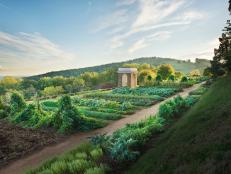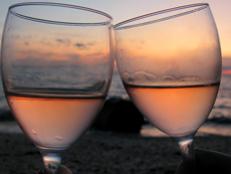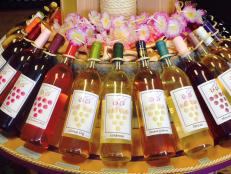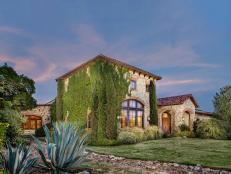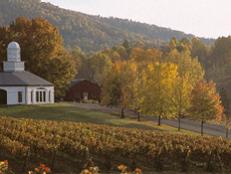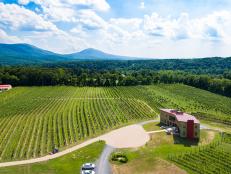Distilleries Making Unexpected Spirits
These distilleries are producing alcohol not typically associated with their location, from vodka on Maui to bourbon in Brooklyn.
Related To:

Photo By: J. Fusco
Photo By: Blue Sky Aerials
Photo By: Kings County Distillery
Photo By: Desert Door Texas Sotol
Photo By: Malicote Photography
Photo By: Cooper and Kings American Brandy
Photo By: Hotel Tango Artisan Distillery
Photo By: Van Brunt Stillhouse
Photo By: Richland Rum
Photo By: SakeOne
Absinthe: Philadelphia Distilling
Perhaps the most notorious of spirits, absinthe’s origins have been traced to late 18th-century Switzerland, where a French doctor concocted the green spirit from wormwood. Not long after, absinthe became the drink among the French creative class before taking off in New Orleans. It's interesting to see Philadelphia Distilling produce the spirit, which they’ve dubbed Vieux Carré in honor of absinthe’s connection to New Orleans. Not only that but when Philadelphia Distilling brought it to market in 2008, it became the first East Coast entity to legally distill, bottle and sell absinthe in nearly 100 years.
Vodka: Hawaii Sea Spirits, Maui
Vodka and cold-weather climates go way back, and Russia is often the first place that springs to mind. So, it’s quite a revelation to discover Hawaii Sea Spirits, a vodka distillery on Maui where year-round highs hover in the 70s and 80s. About 30 different types of organic Polynesian sugarcane are grown on the 80-acre property, whose lush grounds and expansive valley views alone are worth a visit. Tour the Ocean Organic Vodka distillery, where a 60-foot column sill lends itself to producing a smooth product. The other distinguishing feature is Hawaii Sea Spirits’ addition of deep ocean mineral water, making the final product go down that much easier.
Bourbon: Kings County Distillery, Brooklyn
Kentucky may have a lock on Bourbon Country status, but this spirit is produced across the country, including Kings County Distillery in Brooklyn. Based in the Brooklyn Navy Yard, it currently makes four different award-winning kinds: a straight bourbon that’s a blend of New York corn and U.K. malted barley, a peated bourbon with hints of peat smoke, barrel-strength bourbon, which is aged in barrels for up to four years and bottled-in-bond, meaning the entire bourbon production — from distilling to the finished product — is all done at one distillery. Tours don’t just cover the spirit-making process but delve into the history of the area, once home to a thriving whiskey distillery scene.
Sotol: Desert Door Texas Sotol, Texas
Sotol is a little-known spirit that’s made from the sotol plant in Northern Mexico. The region is the only place in the world producing the tequila-like drink, although Desert Door Texas Sotol in Driftwood joined in fall 2017 as the only U.S. producer. The main difference is Desert Door uses the Texas version of sotol, known as Desert Spoon, which affects the taste. The company currently makes two varieties of the spirit — one that’s aged and one that isn’t. The distillery is just a half hour outside of Austin, and while you can’t tour the plant, there is a brand-new tasting room in which to sample sotol while enjoying the desert environs.
Gin: Castle & Key Distillery, Kentucky
Though soon-to-open Castle & Key is located in Bourbon Country, it won’t just be producing bourbon. While the distillery’s bourbon ages, master distiller Marianne Eaves is producing gin starting with Restoration Release Gin, a limited-edition version that contains local botanicals and juniper. Four more types of gin are in the works for the future. In the meantime, Castle & Key is finishing a major overhaul of the 19th-century Old Taylor Distillery with a planned opening date of Sept. 19, 2018. In addition to tastings, tours of the historic 113-acre property will be offered, covering both the distillation and restoration aspects.
Brandy: Copper & Kings American Brandy, Kentucky
Copper & Kings American Brandy is another Kentucky distiller that isn’t all about bourbon. Since brandy is distilled wine, it initially took root in famous wine-producing regions like France. For example, Cognac is often used interchangeably with brandy, although, like Champagne, the spirit can only be called Cognac if it comes from that part of France. But as evidenced by its name, Copper & Kings is producing an American version of brandy. This technique involves copper pot distillation, no added sugar or artificial agents and bourbon-barrel aging. See for yourself on one of its tours, or visit the brand-new bar to learn about the process. You can even bottle your own brandy (and a number of other spirits).
Limoncello: Hotel Tango Artisan Distillery, Indianapolis
It’s nearly impossible to view the cheery yellow limoncello, a lemon liqueur, without imagining its hometown of sunny Italy. Yet the small-batch Hotel Tango Artisan Distillery (whose name derives from the military alphabet), is producing this award-winning spirit in Indianapolis. The limoncello is made by soaking lemon peel in 70 proof alcohol for a month, resulting in a smooth product that’s more tart than sweet. Try it straight or mixed into a cocktail like the Prickly Pirate, a combo of limoncello, rum, pineapple juice, cactus juice and passionfruit simple syrup.
Single Malt: Van Brunt Stillhouse, Brooklyn
Van Brunt Stillhouse in Brooklyn’s all-things-hipster Red Hook neighborhood produces a number of spirits not traditionally associated with the area, like bourbon and single malt. Malt whiskey has long been associated with Scotland, where it’s called Scotch, but a growing number of distillers are now making an American version of it. Van Brunt’s single malt involves malted barley that’s grown around the world and aged in virgin oak casks. Note, the distillery doesn’t plan on selling it again until 2019.
Rum: Richland Rum, Georgia
Rum’s origins began in the 17th century thanks to an abundance of sugarcane crops in the Caribbean. Today, the region remains the largest producer of the spirit, but the award-winning Richland Rum in Richland, Georgia has made a name for producing the only single-estate rum in the U.S. Single estate means every aspect of the rum is created on the Richland property. Even the sugar cane syrup comes from the estate’s own sugar cane crops. In keeping with an age-old Caribbean tradition, the unrefined syrup is then reduced in cast-iron kettles before undergoing the fermenting and distilling process. To see for yourself, tours are Monday through Saturday at both Richland distilleries (the other one is in Brunswick, Georgia).
Sake: SakeOne, Portland
True, sake is actually brewed instead of distilled, but it's worth mentioning. It's becoming more common to discover distilleries making non-native spirits, but breweries making sake? Not so much. This fermented rice wine is beloved in Japan, which makes most of the world’s finest. Enter the award-winning SakeOne in Portland, a brewery that’s using local resources to craft three homegrown sakes. The rice is sourced from California’s Sacramento Valley, while the water comes from Oregon’s Willamette Valley (home to an up-and-coming wine region). The latter is especially key as sake is comprised of 80 percent water — the better the water, the better the sake. Make an appointment to tour the brewery and learn more about the process, or head straight to the tasting room to sample both the local product and a wide selection of imported sakes.
